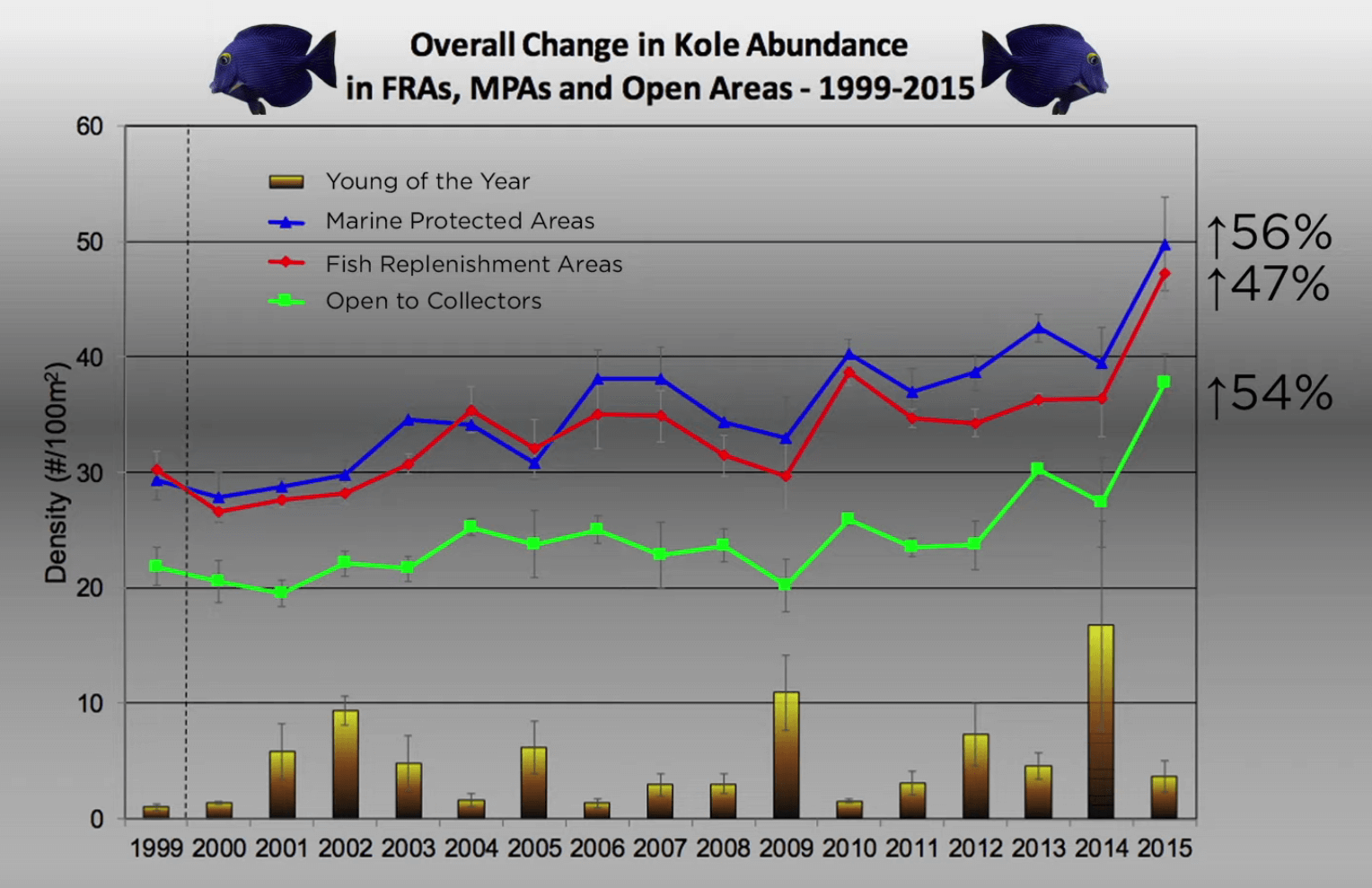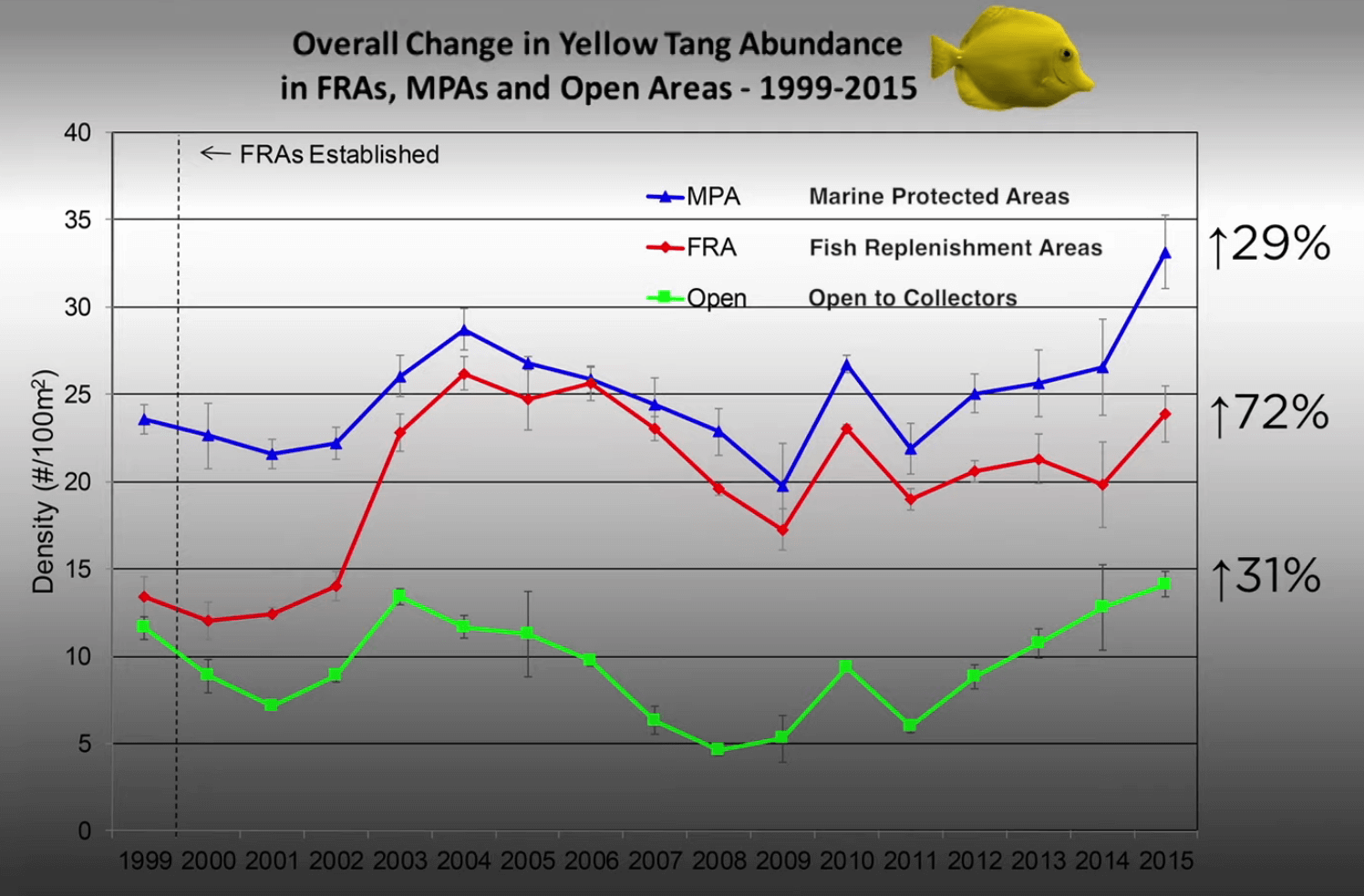Fishery employees and the government want to keep fisheries sustainable. If the fish and their wild habitats are not well cared for, there won’t be many fish for anyone to appreciate in the future.
Much of Hawai’i is off-limits to fish collection. The state manages Marine Protection Areas and Fish Replenishment Areas where fish collection is not allowed. About 35% of the western Big Island shoreline is a fish replenishment zone by law. (The vast majority of fish collection is in West Hawai’i.)
Only about 40 species are approved for collection.
Additionally, Hawai’i regulators have studied reef fish populations since 1999. They have conducted over 8,700 observations of fish populations.
The results have seen significant increases in fish populations in both protected and collection areas.


